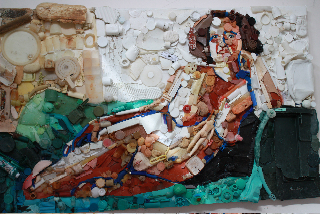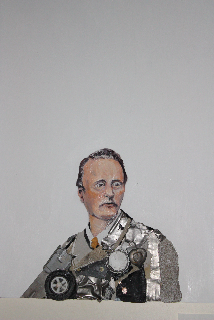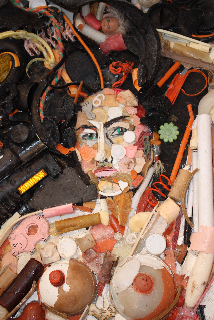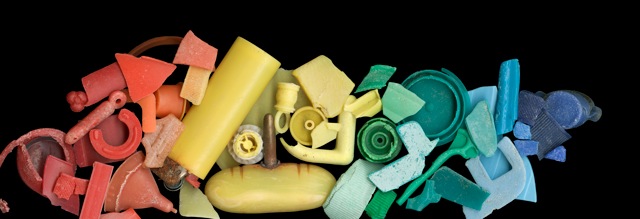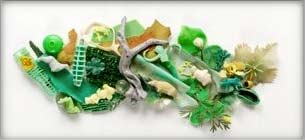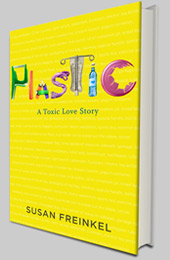Kathleen Egan, a San Francisco-based artist, whose mission is to "Stop The Plastic Wave":
There is an ever-growing amount of plastic entering waterways and ultimately oceans that has no feasible removal solution. In Alaska, plastic accumulates from all over Asia and the US. In third world countries plastic is basically dumped in the ocean. However, the average American is totally ignorant of the cost (to oceans, marine life, and the eco-system at large) of single-use, disposable plastic containers. Corporations, through manufactured demand, have trained consumers to "need" single use disposable plastic contains at a break neck pace. My mission is to help people understand how their individual choices of convenience impact the environment and how easy it is to make alternative, environmentally conscious choices.
Pam Longobordi
In 2006, after discovering the mountainous piles of plastic debris the ocean was depositing on the remote shores of Hawaii, I began collecting and utilizing this plastic as my primary material. Since then, I have made scores of interventions, cleaning beaches and making collections from all over the world, removing thousands of pounds of material from the natural environment and re-situating it within the cultural context for examination. These collection missions are often done solo, as part of my process. I approach the sites as a forensic scientist, examining and documenting the deposition as it lay, collecting and identifying the evidence of the crime.
Plastic objects are the cultural archeology of our time. These objects I see as a portrait of global late-capitalist consumer society, mirroring our desires, wishes, hubris and ingenuity. These are objects with unintended consequences that become transformed as they leave the quotidian world and collide with nature to be transformed, transported and regurgitated out of the shifting oceans. The ocean is communicating with us through the materials of our own making. The plastic elements initially seem attractive and innocuous, like toys, some with an eerie familiarity and some totally alien. At first, the plastic seems innocent and fun, but it is not. It is dangerous. We are remaking the world in plastic, in our own image, this toxic legacy, this surrogate, this imposter.
Even though my previous work involved heavily constructed painting-objects, I consciously avoid commodifying this work into a luxury object, preferring to keep it in a transitive form as installation. All of the work can be dismantled, reconfigured but nearly impossibly recycled. The objects are presented as specimens on steel pins.
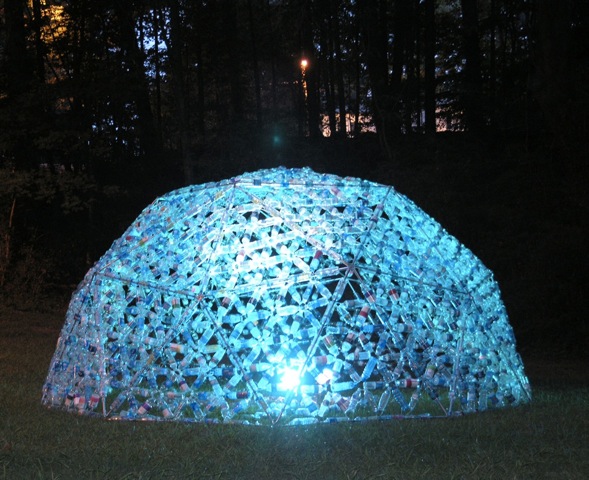
The Bottle Project, public art for Sunken Garden Park, Atlanta, 2008
made from 2500 reclaimed water bottles
City of Atlanta, A (new) Genre Landscape
http://thewaterbottleproject.blogspot.com
|
|
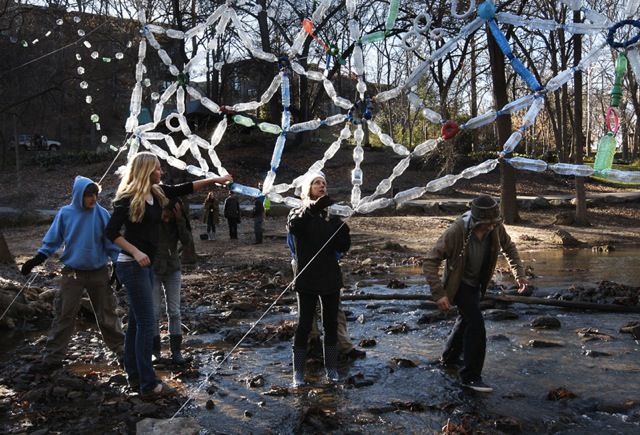
"Reedy River Web" 2011, 45 ft. x 12 ft
Plastic taken from the Reedy River, Greenville, SC
Project done for Greenville County Parks with Governor's School for the Arts |
|
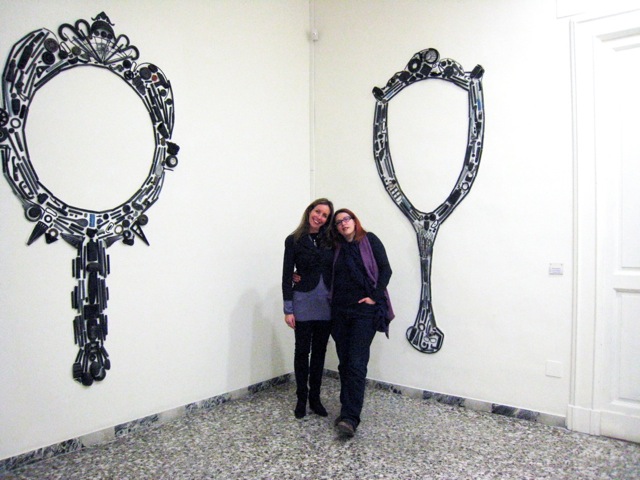
Sappho's Mirrors I and II 2010, found ocean plastic, each 96" x 48" x 5", installed at Primo Piano LivingGallery, Lecce, Italy
|
|
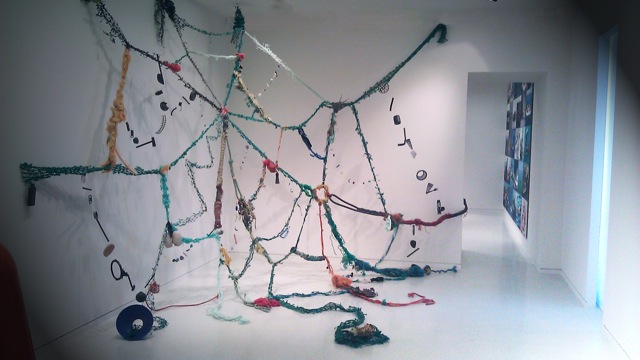
Consumption Driftweb (Self-proclaiming Material Snare)2011
Found ocean plastic and driftnet from Hawaii, Florida Everglades and New Bedford, MA
|
|
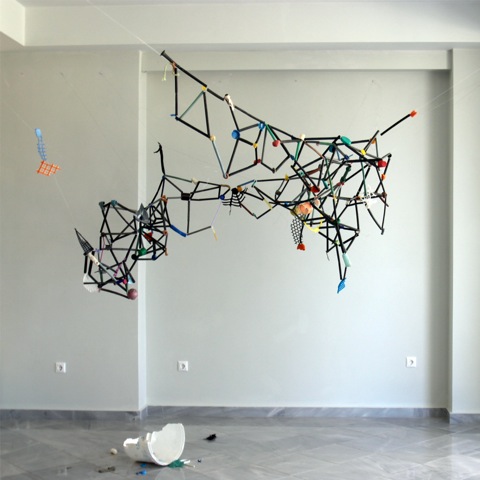
One World Ocean
Ionion Center for Art and Culture,
Kefalonia, Greece
|
|
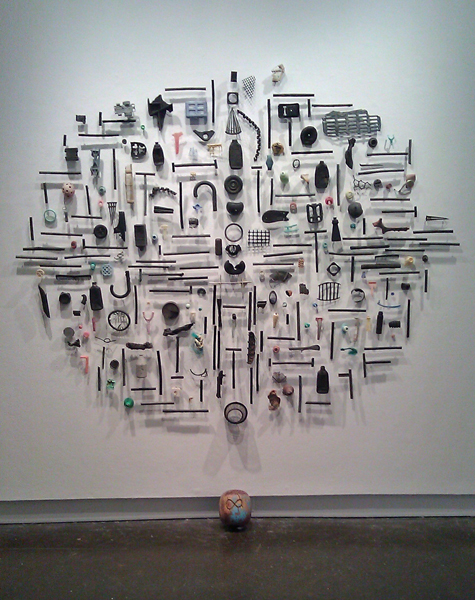
Ghosts of Consumption (for Piet M.) 2011
found ocean plastic
110" x 75" x 5"
|
|
|

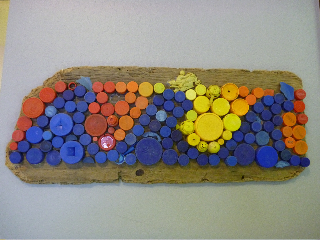
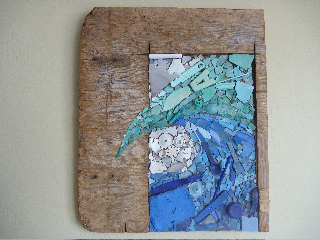







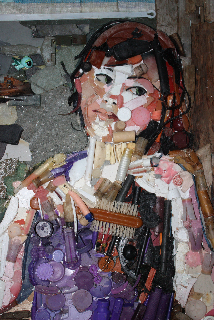 Tess Felix
Tess Felix